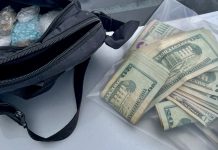May 18 (UPI) — An analysis of microbes living on banknotes collected from hospitals and metro stations in Hong Kong suggests dangerous pathogens can populate on paper money.
The research — detailed in the journal Frontiers in Microbiology — offers clues as to how bacterial and viral infections spread across the globe.
After collecting cultures from banknotes throughout Hong Kong, researchers allowed the microbes to grow in the lab, revealing the presence of dangerous pathogens, including Escherichia coli and Vibrio cholera.
“In short, banknotes act as a medium ‘absorbing’ bacteria from other environments and the potential pathogens live quite well on the banknote surface,” Jun Li, a researcher at the University of Hong Kong, said in a news release.
Researchers compared the money microbes to the microbiota collected from volunteers’ hands, metro station air, drinking water and marine sediments. The results showed banknotes host the greatest diversity of bacteria. Scientists also found a higher concentration of antibiotic-resistance genes among microbes collected from banknotes.
“The high amount of antibiotic-resistance genes found from the banknotes is considerable and can potentially lead to the circulation of antibiotic resistance to humans and other environment,” said Li.
Though a cashless economy may be the future, banknotes remain common. Li suggests banks and currency printers pay closer attention to the hygiene risks inherent in handling money.
A study in 2016 found plastic banknotes, like five pound note released in the United Kingdom, carry fewer microbes than bills made of cotton, cotton-linen or paper.






